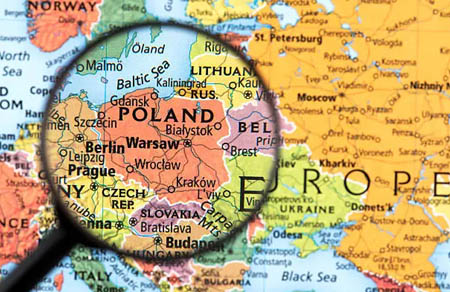
Russia-Ukraine War and U.S. Trade Policies: A World at a Crossroads
November 26, 2024The escalating conflict between Russia and Ukraine continues to reshape global dynamics, with fresh developments marking a deeply unsettling chapter in modern geopolitics. Simultaneously, U.S. trade policies are poised to deliver seismic economic ripples, placing these two issues at the forefront of international attention.
Kyiv Under Siege: The Drone Onslaught
In the early hours, waves of Iranian-made drones supplied by Russia descended upon Kyiv, Ukraine's capital. Swarming from all directions, the attack reflects an increasingly sophisticated and relentless campaign by Russia to destabilize Ukraine. Kyiv’s mayor reported widespread damage despite Ukrainian air defenses intercepting 50 out of 73 drones in the prior day’s assaults. Nevertheless, the drones that bypassed defenses inflicted significant destruction and casualties, underscoring the devastating potential of even a fraction of these unmanned aerial vehicles.
The Pentagon closely monitors these developments, highlighting the role of external actors such as Iran and North Korea in bolstering Russia’s arsenal. The ongoing drone warfare underscores the dual challenge faced by Ukraine: maintaining territorial defense and managing aerial assaults. Recent use of U.S.-supplied long-range missiles by Ukraine to target Russian ammunition depots signifies a shift in tactics, albeit a measured one due to limited missile supplies. However, these countermeasures have elicited sharp responses from Moscow, with Russia citing them as justification to update its nuclear doctrine—a move largely interpreted as saber-rattling but not without concern.
European and Global Responses
The ripple effects of this conflict are felt far beyond Ukraine’s borders. Germany has taken steps to bolster its civil defense infrastructure, announcing plans to convert basements, garages, and subway stations into emergency shelters—a move reminiscent of World War II preparations. Concurrently, reports from Moscow boast of Russia’s hypersonic missile advancements and increased weapon production, now estimated to outpace the European Union’s combined output by a staggering 4-to-1 ratio.
These developments evoke a chilling sense of Cold War-era brinkmanship, with NATO urging businesses in the U.S. and Europe to adopt wartime resilience strategies. Amid such preparations, European nations grapple with the challenge of maintaining unity. The rise of pro-Russian sentiments in certain EU states, such as Romania, adds complexity to the alliance’s strategy, potentially weakening collective support for Ukraine.
U.S. Trade Policies: Shocks on the Horizon
As the war rages, U.S. domestic policy could further disrupt the global landscape. Former President Donald Trump, a leading candidate for the 2024 election, has unveiled a bold and controversial trade agenda. He promises to impose a 25% tariff on all goods from Canada and Mexico and an additional 10% tariff on Chinese imports. These measures, intended to assert economic dominance, could have profound implications for North American partnerships and global markets.
The proposed tariffs, particularly the across-the-board levy on Canadian and Mexican imports, would significantly disrupt supply chains, potentially escalating costs for American consumers and businesses. While the U.S. economy might leverage its current strength against a weakened Chinese economy, experts warn that such policies could alienate allies and spark retaliatory measures, deepening economic divides. Trump’s rhetoric ties this assertive trade policy to his broader geopolitical strategy, positioning himself as a dealmaker who can end the war in Ukraine swiftly while reasserting American power on the global stage.
A Dangerous Crossroads
The intertwining of military aggression and economic maneuvering paints a complex picture of the current global order. Russia’s intensified military campaign in Ukraine and its nuclear posturing highlight the precariousness of peace, while U.S. trade policies threaten to reshape international relations further.
As nations brace for escalating conflict and economic upheaval, the choices made by global leaders in the coming months will shape the trajectory of this volatile era. From the streets of Kyiv to the halls of Washington and Moscow, the stakes could not be higher.
Read More From Us
- 🌟🌟🌟🌟🌟 For more International Breaking News visit us at International News
- 🌟🌟🌟🌟 For More Russia-Ukraine War updates, click here
- 🌟🌟🌟🌟🌟 For more International Trade Business news, hit here
Tags: #RussiaUkraineWar 🇷🇺🇺🇦 #GlobalTrade 🌍📈 #Geopolitics 🗺️🛡️ #USForeignPolicy 🇺🇸🤝 #WorldTensions ⚡🌐 #NATOAllies 🛡️🤝 #EconomicImpact 📊💸 #KyivDroneAttacks 🚁🎯 #HypersonicMissiles 🚀💥 #GlobalStability 🌎⚖️ #GlobalPostHeadline
Thank you for reading: Globalpostheadline.com





